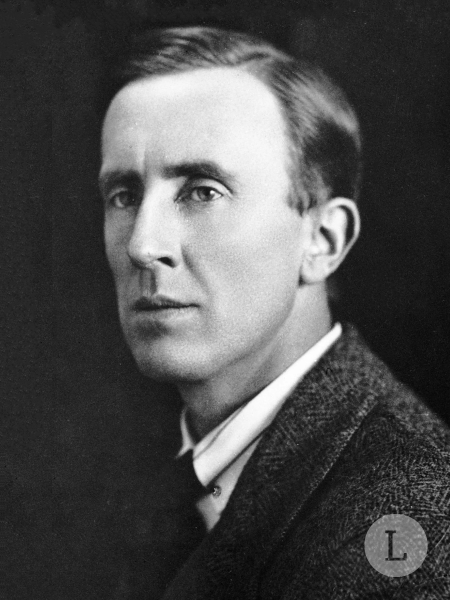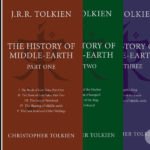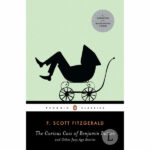The Silmarillion is a collection of myths and legends that form the background and history of J.R.R. Tolkien’s Middle-Earth. The book is divided into five parts and covers a vast period of time, from the creation of the universe to the end of the First Age, a period spanning thousands of years.
BOOK INFO
version: CLASSIC, EBOOK, AUDIOBOOK
number of pages: 365
literary movement: MODERNISM
literary genre: FANTASY
1st edition: 1977
years of writing: 1910 - 1973
SUMMARY
The first part, Ainulindalë, tells the story of the creation of the world by the supreme being, Eru, and the subsequent actions of the Ainur, who are the first created beings of Eru. It describes the Great Music of the Ainur, which was used by Eru to create the world and all of its inhabitants.
The second part, Valaquenta, describes the Valar and Maiar, who are the beings created by the Ainur to govern and shape the world. It details the characteristics of each of the Valar and Maiar, and their respective roles in the world.
The third part, Quenta Silmarillion, tells the story of the First Age of Middle-Earth. It describes the creation of the Silmarils, which are three gems that contain the light of the Two Trees of Valinor, and the events that lead to their theft by the dark lord Morgoth. The Silmarils become the focus of the struggle between Morgoth and the Eldar, who are the Elves that follow the Valar.
The fourth part, Akallabêth, describes the history of the Second Age of Middle-Earth. It tells the story of the rise and fall of Númenor, a great island kingdom that was created by the Valar to be a haven for the Edain, the Men who had fought against Morgoth in the First Age. The Númenóreans become corrupted by their own pride and ambitions, and their downfall is brought about by the worship of Morgoth.
The final part, Of the Rings of Power and the Third Age, tells the story of the Rings of Power and the Third Age of Middle-Earth. It describes the creation of the Rings by the Elven-smiths, and the subsequent events that lead to the War of the Ring, which is the focus of The Lord of the Rings.
MAIN CHARACTERS
Eru Ilúvatar
The supreme being and creator of the universe.
Morgoth
The main antagonist of the book, a fallen Valar who seeks to dominate Middle-Earth.
Manwë
The king of the Valar, and the lord of the winds and the skies.
Melkor
Morgoth’s original name, and the greatest of the Valar until he fell from grace.
Fëanor
The greatest craftsman of the Elves, who creates the Silmarils and leads the Elvish rebellion against Morgoth.
Beren
A mortal man who falls in love with Lúthien, and embarks on a quest to retrieve a Silmaril from Morgoth’s crown.
Lúthien
A half-elf who falls in love with Beren, and who uses her magical powers to help him in his quest.
Thingol
The king of the Elves of Doriath, and Lúthien’s father.
Túrin Turambar
A tragic hero who is cursed by Morgoth, and whose life is marked by violence and tragedy.
Eärendil
A mariner who travels to the Undying Lands to seek the aid of the Valar in the war against Morgoth.
All have their worth and each contributes to the worth of the others.
JOHN RONALD ReUEL TOLKIEN
TOP 10 POINTS
- The Creation of the Universe by Eru and the Ainur: The first part of the book, Ainulindalë, tells the story of the creation of the universe by Eru, the supreme being, and the Ainur, the first created beings.
- The rebellion of Morgoth, the Fallen Vala, and the War against the Valar: The second part of the book, Valaquenta, describes the Valar and Maiar, and the subsequent rebellion of Morgoth, which leads to the War of the Powers.
- The Creation of the Two Trees of Valinor, which Provide Light to the World: The third part of the book, Quenta Silmarillion, tells the story of the creation of the Two Trees of Valinor, which provide light to the world and are the source of the Silmarils.
- The Making of the Silmarils by Fëanor, the Greatest Craftsman of the Elves: The fourth part of the book, Quenta Silmarillion, describes the making of the Silmarils by Fëanor, and the subsequent theft of the gems by Morgoth.
- The Theft of the Silmarils by Morgoth and the Ensuing War between the Elves and Morgoth’s Armies: The fifth part of the book, Quenta Silmarillion, tells the story of the war between the Elves and Morgoth’s armies, which is fought over the Silmarils.
- The Love Story of Beren and Lúthien, which Involves a Quest to Retrieve one of the Silmarils from Morgoth’s Crown: The sixth part of the book, Quenta Silmarillion, tells the story of the love between the mortal man Beren and the half-elf Lúthien, and their quest to retrieve a Silmaril from Morgoth’s crown.
- The Downfall of Númenor, a Great Island Kingdom Created by the Valar, due to the Corruption of its People by Morgoth’s Lies: The seventh part of the book, Akallabêth, describes the history of Númenor and its downfall due to the corruption of its people by the lies of Morgoth’s lieutenant, Sauron.
- The Forging of the Rings of Power by the Elven-smiths, and the Machinations of Sauron to Dominate Middle-Earth: The eighth part of the book, Of the Rings of Power and the Third Age, tells the story of the forging of the Rings of Power by the Elven-smiths, and the subsequent machinations of Sauron to dominate Middle-Earth.
- The Creation of the Fellowship of the Ring and Their Quest to Destroy the One Ring, which is the Focus of The Lord of the Rings: The ninth part of the book, Of the Rings of Power and the Third Age, describes the creation of the Fellowship of the Ring and their quest to destroy the One Ring, which is the focus of The Lord of the Rings.
- The End of the First Age and the Departure of the Valar from Middle-Earth, Leaving it to the Care of the Children of Ilúvatar, the Elves and Men: The final part of the book, Of the Rings of Power and the Third Age, tells the story of the end of the First Age, and the departure of the Valar from Middle-Earth, leaving it to the care of the Children of Ilúvatar, the Elves and Men.
The Silmarillion is a complex and richly detailed work that expands on the mythology of Middle-Earth, and provides a deeper understanding of the world and its inhabitants. It is a must-read for fans of Tolkien’s work, and provides a fascinating insight into the history of Middle-Earth.
In conclusion, The Silmarillion is a rich and complex work that provides a detailed look at the creation of Middle-Earth and the events that led up to The Lord of the Rings. The Book is full of themes, characters, and motifs that are common throughout Tolkien’s work, including the conflict between good and evil, the role of providence, and the importance of myth. The book is also notable for its use of language, with characters using it to create, deceive, and manipulate others.
In addition to its thematic richness, The Silmarillion is also notable for its structure. The book is divided into five parts, each of which tells a different story that contributes to the overall narrative of the book. The first part, Ainulindalë, is a creation myth that establishes the cosmology of Middle-Earth, while the final part, Of the Rings of Power and the Third Age, provides a bridge to The Lord of the Rings.
Overall, The Silmarillion is a complex and challenging work that requires a significant investment of time and attention from the reader. However, for fans of Tolkien’s work, it provides a rich and rewarding experience that deepens their understanding of the world of Middle-Earth and the themes that underpin Tolkien’s writing.
ABOUT WRITER

J.R.R. Tolkien, full name John Ronald Reuel Tolkien, was an English writer, poet, and academic who is best known for his fantasy novels The Hobbit and The Lord of the Rings. He was born in Bloemfontein, South Africa on January 3, 1892, but moved to Birmingham, England with his family when he was three years old. His father, Arthur Tolkien, was an English bank manager and his mother, Mabel Tolkien, was a talented artist and musician.



